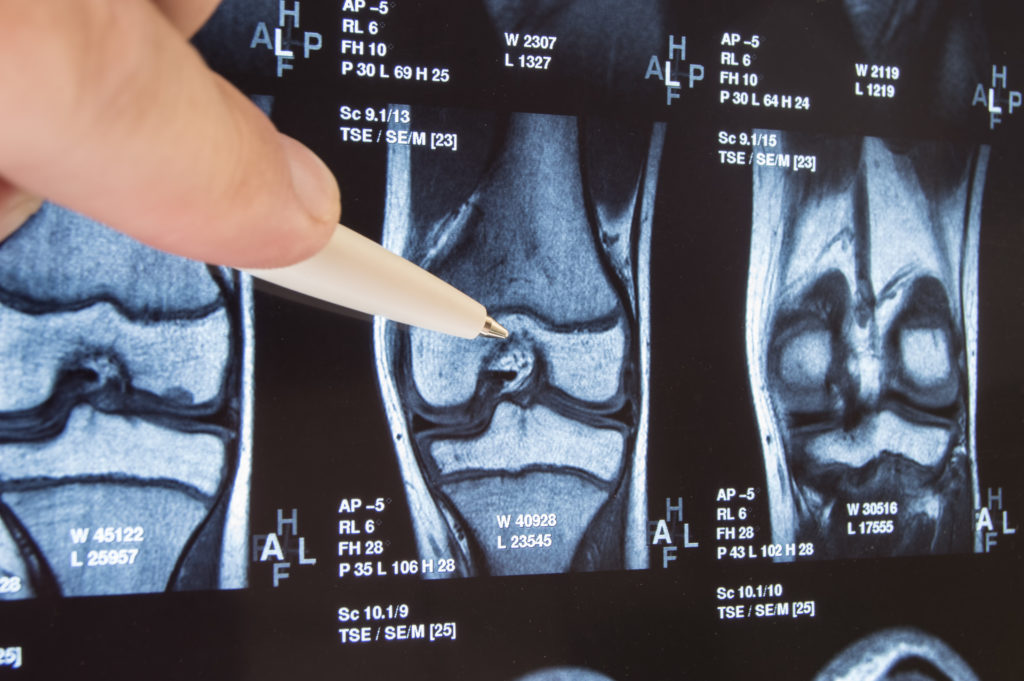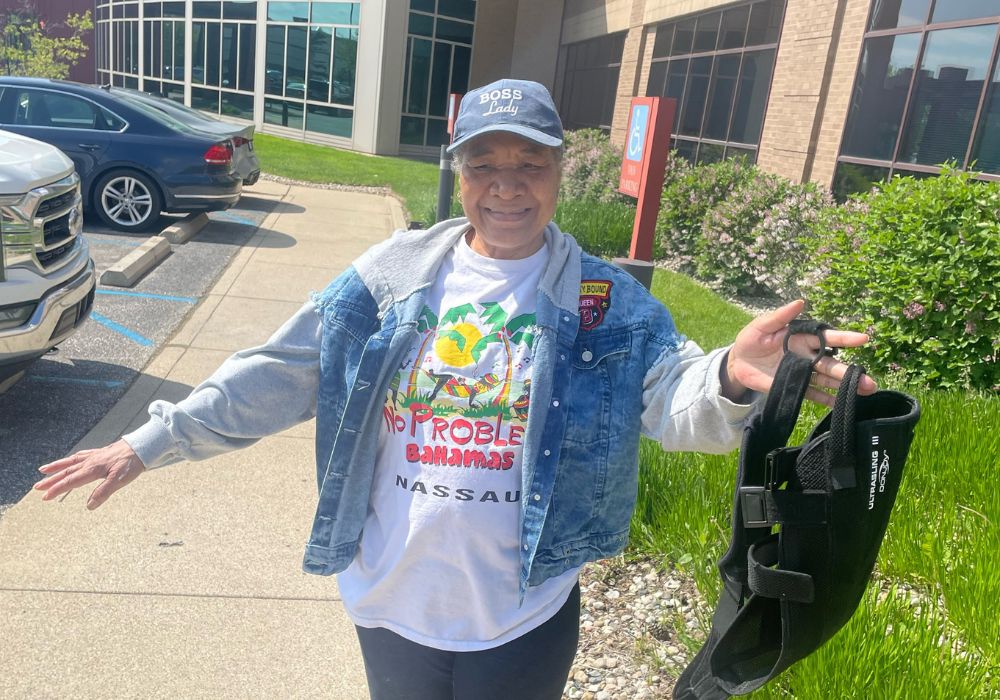THIS POST IS PART OF THE ULTIMATE GUIDE TO SPORTS MEDICINE
Are you experiencing pain in your hamstring? Have you recently had an accident or injury? You may have severely strained or torn your hamstring. A hamstring strain, tear or pulled hamstring is an injury to the muscles in the back of your thigh.
OrthoIndy sports medicine specialist, Dr. Jeffery Soldatis explains:
- When hamstring repair surgery is necessary
- What to expect during surgery
- How to recover from treatment
Knee Anatomy
The hamstring muscles are in the back of the thigh. Beginning below the pelvis, the hamstring muscles cross the knee joint and end at the lower leg. These muscles assist in the extension of your leg straight back and help bend your knee.
A strained hamstring can be a pull, a partial tear or a complete tendon tear. The strains usually occur in the thick, central part of the muscle or where the muscle fibers join tendon fibers.
What does a hamstring strain grade mean?
A hamstring strain grade determines the severity of your injury.
- Grade 1 (pull): Mild, usually heals quickly, two to four weeks
- Grade 2 (partial tear): Moderate, heals over four to eight weeks
- Grade 3 (complete tear): Severe, often requires acute surgery or will take months to heal
In severe hamstring injuries, the tendons may tear completely away from the bone and even pull bone with it, known as an avulsion injury.

Why does my hamstring hurt?
Most hamstring injuries are the cause of sudden athletic injuries. Like your muscle taking on too much weight or stretching farther than it should. In severe cases, your muscle will tear under the added pressure.
Some of the most common sports where athletes sustain hamstring injuries are:
What are the symptoms of a hamstring strain?
If you have a hamstring strain you may experience the following:
- Sudden sharp pain in the back of the thigh or near the buttock
- Swelling
- Bruising or discoloration on the back of your thigh to the back of your knee
- Weakness in hamstring
“If you experience two or more of the above symptoms, you should seek prompt orthopedic evaluation,” Dr. Soldatis said.
Physician examination
To determine whether you have a hamstring strain, your knee physician will ask you for a complete medical history, ask questions about your pain and how long you have been experiencing your symptoms, and conduct a physical examination. An X-ray or MRI may be necessary to rule out other injuries.
MAKE AN APPOINTMENT WITH AN ORTHOINDY SPORTS MEDICINE SPECIALIST
What is the non-operative hamstring treatment?
“Treatment generally depends on the grade of the injury. Treatment is usually non-surgical for grades one and two,” Dr. Soldatis said.
This treatment includes:
- Rest, Ice, Compression and Elevation (RICE)
- Activity modification or immobilization: Such as avoiding activities that worsen symptoms
- Non-steroidal anti-inflammatory drugs (NSAIDs) such as ibuprofen
- Home exercises to strengthen muscles
- Physical therapy to increase hamstring strength and flexibility
When is hamstring surgery necessary?
Many mild hamstring injuries will heal without surgery. If you’re an active child or adult, and your hamstring is severely strained or torn, hamstring repair surgery may be necessary.
“The physician is looking more at the physiologic active age of a patient,” said Dr. Soldatis. “If an active patient in their 70s has a proximal hamstring disruption, they may be a candidate for a repair.”
Surgical treatment is necessary if you have two, if not three, of your proximal hamstring tendons completely ruptured. These tendons are the semimembranosus, semitendinosus and biceps femoris.
“The goal of a repair is to get the patient back to their pre-injury level, whether they are in their 20s or in their 70s,” Dr. Soldatis said. “Generally, we have a greater than 95% success rate in achieving that goal.”
How to repair a hamstring injury
Undergoing hamstring repair surgery is a low-risk surgery that takes about an hour and a half.
During hamstring repair surgery, you will go under general anesthesia while you lay on your stomach. Your surgeon will identify your tendon rupture once your gluteus maximus muscle is out of the way.
“We remove any part of the tendon on the bone so we have a clean surface,” said Dr. Soldatis. “Then we place three, if not four, suture anchors through the tendon to reattach the tendon.”
If your injury happened a few weeks before surgery, your surgeon may examine your sciatic nerve. This is to make sure scar tissue hasn’t formed around it.
Hamstring surgery recovery
After surgery, we give you a brace to wear for the first six weeks with your knee bent at a 90-degree angle. A 23-hour observation continues overnight after surgery so you can work with physical therapy to make sure your brace fits well. We also give you crutches because you won’t be able to put any weight on that leg for a six-week period.
“You won’t have any more therapy until six weeks post-operative when you begin walking and we discontinue the brace,” Dr. Soldatis said.
Hamstring physical therapy
“We use a phased rehabilitation program to help you return to pre-injury performance levels,” Dr. Soldatis said.
Three to four weeks after surgery, you can use over the counter pain medication and muscle relaxers if your physician prescribes them. Sometimes, anti-inflammatories are still necessary to reduce swelling.
After six weeks in the brace, you will begin about three months of physical therapy. This will include gradual stretching and strengthening exercises directed by a therapist.
After three months of physical therapy, you will be about 80 percent recovered. Usually, this means you can gradually return to your normal sports and physical activities. Follow your physician’s directions if you’re unsure about where you are in the recovery process.
To schedule an appointment with Dr. Soldatis, please call 317.569.2515 or request an appointment at OrthoIndy/request.
Schedule an appointment
Your well-being is important to us. Click the button below or call us to schedule an appointment with one of our orthopedic specialists. If your injury or condition is recent, you can walk right into one of our OrthoIndy Urgent Care locations for immediate care. For rehabilitation and physical therapy, no referral is needed to see one of our physical therapists.





